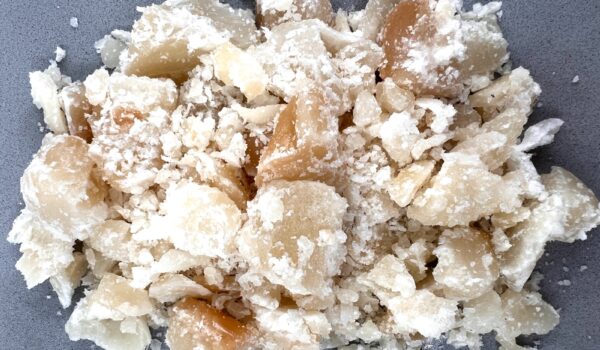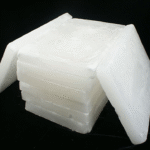Petroleum Wax Light Grade
Petroleum Wax Light Grade ( Light Slack Wax, LSW ) is a specific type of slack wax that is characterized by its lower melting point and softer consistency compared to regular slack wax. In this article, we will explore the properties, uses, and production process of LSW. Discover what Light Slack Wax is, its composition, refining process, key industrial uses, and benefits across cosmetic, rubber, and lubricants industries.
Properties of Petroleum Wax Light Grade ( LSW )
Light slack wax possesses certain properties that distinguish it from regular slack wax. These properties include:
Lower Melting Point:
Light slack wax has a lower melting point compared to regular slack wax. While regular slack wax typically melts between 45°C to 60°C (113°F to 140°F), Petroleum Wax Light Grade has a melting point below 45°C (113°F). This lower melting point makes it suitable for applications that require lower heat resistance.
Softer Consistency:
Petroleum Wax Light Grade has a softer and more malleable consistency than regular slack wax. It is less solid and more pliable, allowing it to be easily molded and shaped. This property makes light slack wax suitable for applications that require flexibility and ease of use.
Reduced Hardness:
Petroleum Wax Light Grade exhibits reduced hardness compared to regular slack wax. This lower hardness allows it to provide a softer and more cushioned texture in applications that require a more gentle touch.
Improved Spreadability:
The softer consistency of Petroleum Wax Light Grade enhances its spreadability. It can be easily spread and distributed over surfaces, making it suitable for applications that require smooth and even coverage.
Uses of Petroleum Wax Light Grade (LSW)
Light slack wax finds application in various industries due to its unique properties. Some common uses of LSW include:
Cosmetics and Personal Care Products:
Light Slack Wax is used in the formulation of cosmetics and personal care products, such as creams, lotions, lip balms, and ointments. Its softer consistency allows for better spreadability and provides a smooth and moisturizing texture to these products.
Candle Making:
Light Slack Wax is utilized in candle making. Its lower melting point and softer consistency make it ideal for creating container candles, votive candles, and other types of candles that require a lower melting point and a more pliable wax.
Wax Blends:
LSW is often blended with other waxes, such as paraffin wax or microcrystalline wax, to achieve specific properties. These wax blends are used in various applications, including packaging coatings, crayons, and modeling waxes.
Polishes and Coatings:
Light Slack Wax is used in the production of polishes and coatings. Its soft consistency allows for easy application and provides a protective and glossy finish to surfaces, such as wood, leather, and floors.
Rubber and Plastic Industry:
Light Slack Wax is employed in the rubber and plastic industry as a processing aid. It helps improve the flow properties of rubber compounds and plastic materials during processing, resulting in better moldability and increased product quality.
Production Process of Petroleum Wax Light Grade ( LSW )
The production process of light slack wax is similar to that of regular slack wax, with some variations to achieve the desired properties of the final product. The general production process includes:
Distillation:
Crude oil is subjected to distillation to separate it into various fractions based on their boiling points. Petroleum Wax Light Grade is obtained as a residue during this distillation process.
Deoiling:
The slack wax obtained from distillation contains oil and impurities. It undergoes a deoiling process to remove the oil content and obtain a purer form of LSW.
Filtration:
The deoiled slack wax is then filtered to remove any solid particles or impurities. This filtration process helps improve the quality and purity of the Petroleum Wax Light Grade.
Refining:
Depending on the desired properties, LSW may undergo further refining processes, such as solvent refining or clay treatment. These processes help remove any remaining impurities and enhance the softness and spreadability of the wax.
Packaging:
The final refined Petroleum Wax Light Grade is packaged in suitable containers for storage and transportation to end-users.
It is important to note that the production process may vary depending on specific industry requirements and the desired quality of the light slack wax.
In conclusion, light slack wax is a specialized type of slack wax with a lower melting point, softer consistency, and reduced hardness.
It finds applications in cosmetics, candle making, wax blends, polishes and coatings, and the rubber and plastic industry. The production process involves distillation, deoiling, filtration, and refining to obtain a high-quality Petroleum Wax Light Grade product.
Petroleum Wax Light Grade: Discover what Light Slack Wax is, its composition, refining process, key industrial uses, and benefits across cosmetic, rubber, and lubricants industries.
-
Definition of Light Slack Wax
-
Light Slack Wax Explained
-
Light Slack Wax Properties
-
Uses of Light Slack Wax
-
Light Slack Wax Composition
-
Slack Wax Light Grade
-
What is Petroleum Slack Wax
-
Petroleum Wax Light Grade Meaning
Contact Pars Universal Bitumen
For more information or to place an order, please contact Pars Universal Bitumen sales team @ Contact Us.
Our Expert will be in touch with you to guide you about the Custom grades of slack wax with specific oil content and melting points that can be produced according to your project requirements. Please get in touch with us for discussing your project details.





